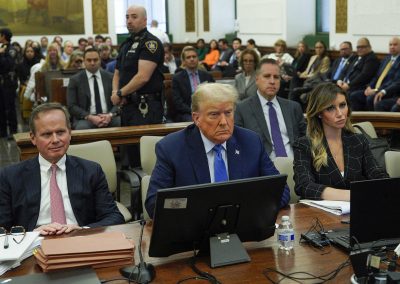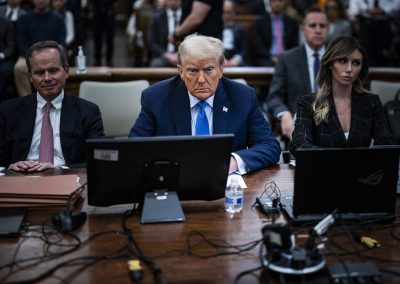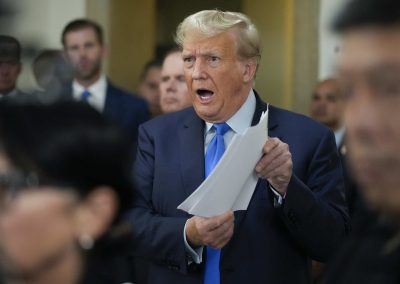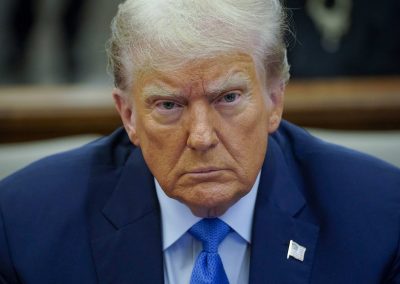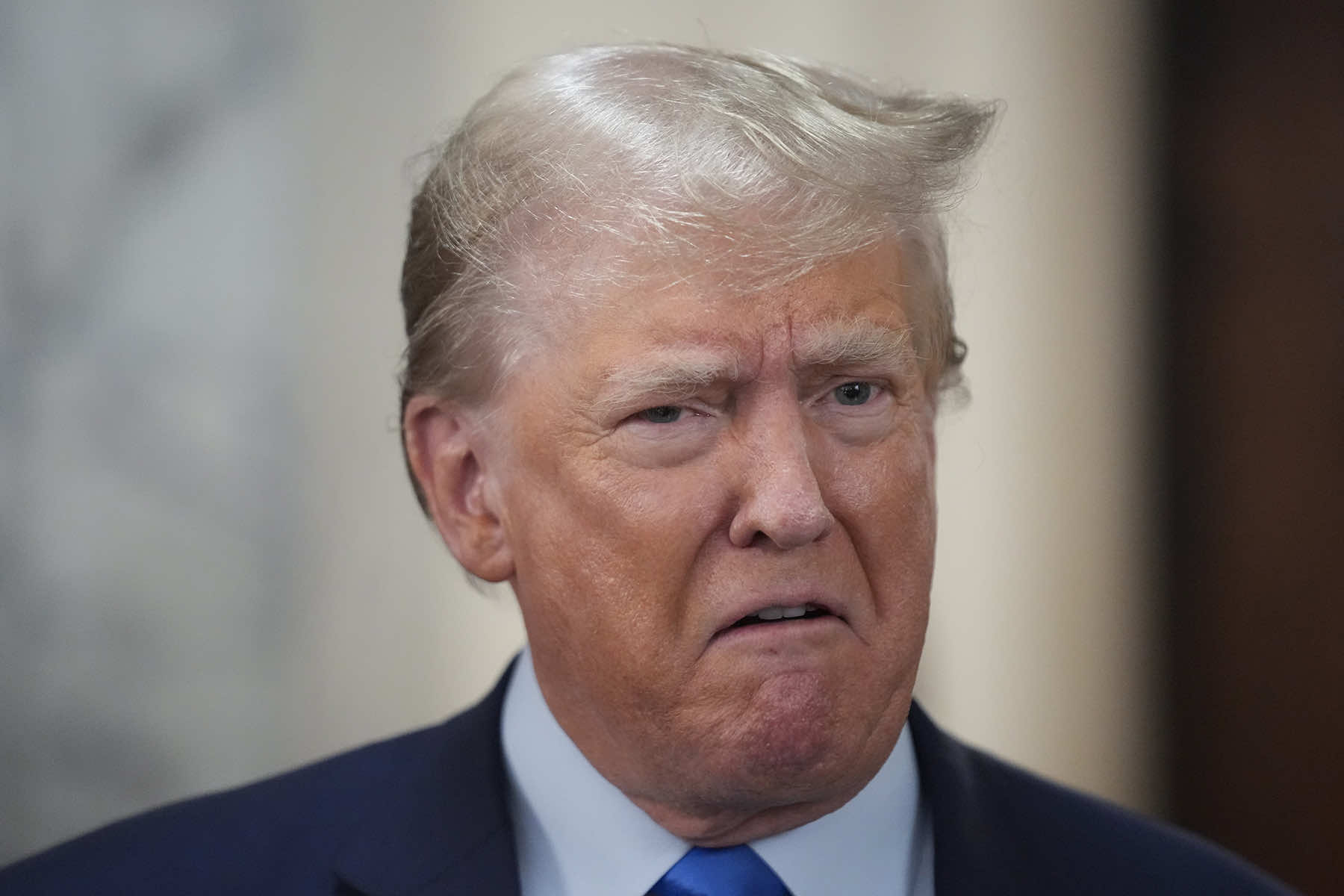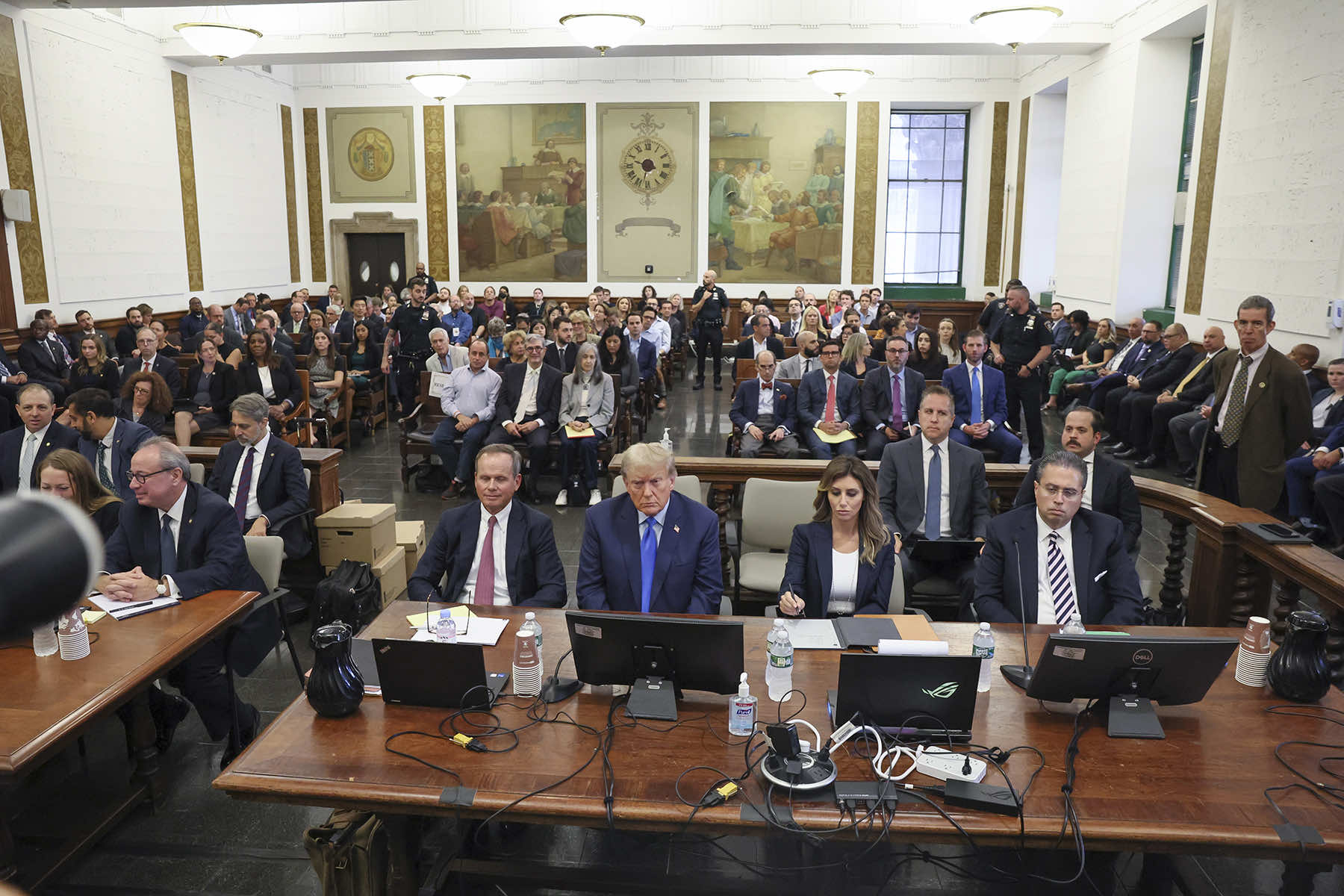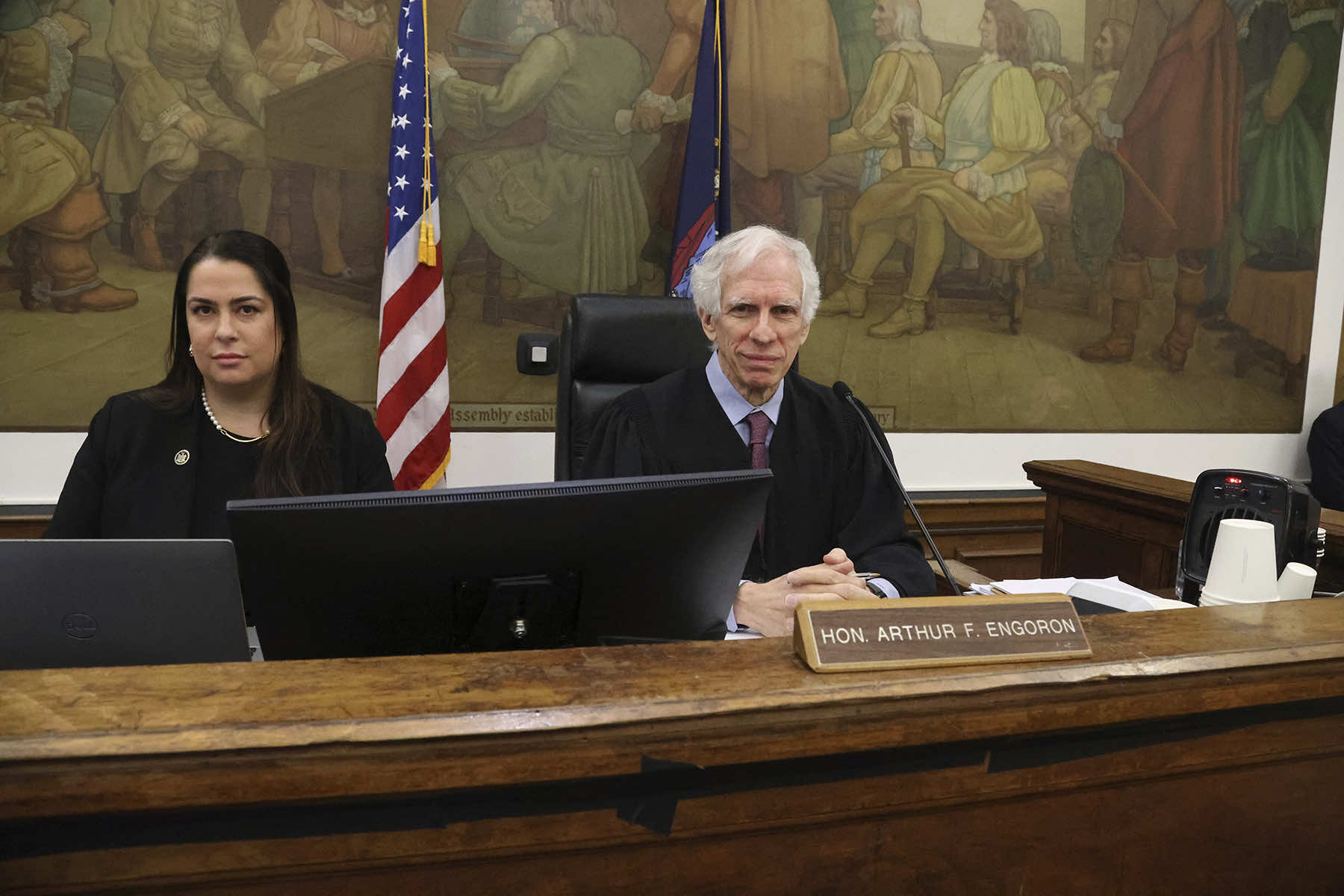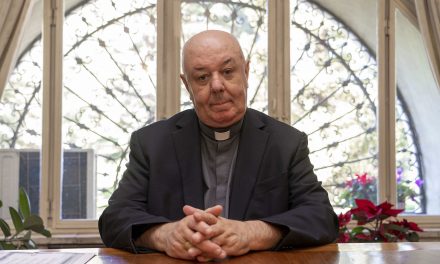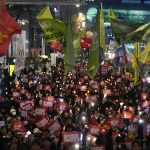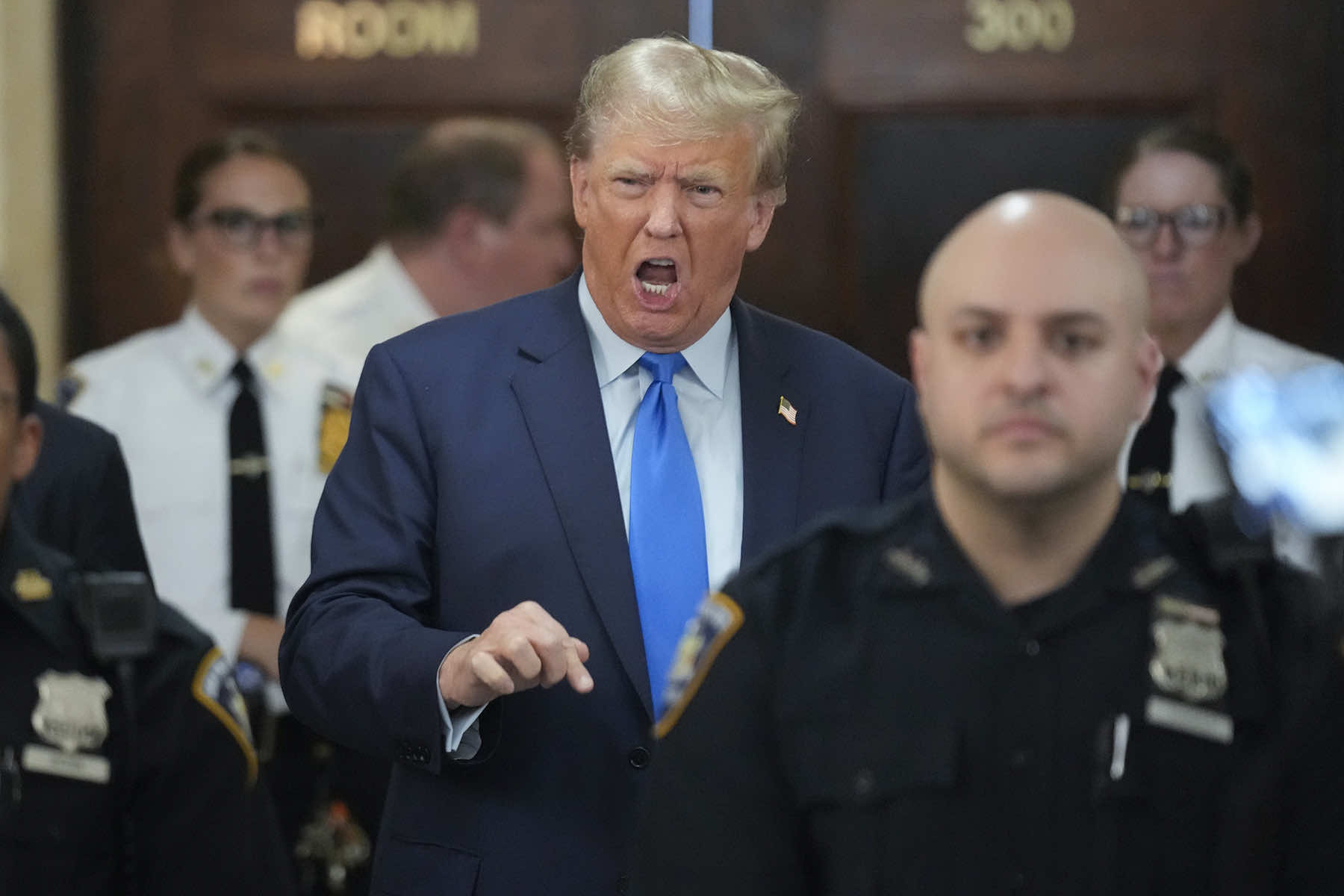
The judge presiding over the civil fraud trial of Donald Trump repeatedly admonished him to keep his answers concise on November 6, reminding him that “this is not a political rally” as the former president and leading Republican presidential candidate began testified in a lawsuit accusing him of dramatically inflating his net worth.
The exchanges underscored Trump’s unwillingness to adapt his famously freewheeling rhetorical style to a formal courtroom setting, where clipped and cautious answers from witnesses are the norm.
“We don’t have time to waste. We have one day to do this,” an exasperated Supreme Court Judge Arthur Engeron said. At another point, turning to Trump’s attorney, the judge said, “I beseech you to control him if you can. If you can’t, I will.”
But while his presence on the stand was a vivid reminder of the legal woes he faces as he vies to reclaim the White House in 2024, it also functioned as a campaign platform to raise anew his claims of political persecution at the hands of government lawyers and judges.
“I think this is a political witch hunt and she should be ashamed of herself,” Trump said, referring to New York state Attorney General Letitia James, whose office brought the case. “This is the opposite of fraud. The fraud is her.”
James, who was in the courtroom, stared straight ahead at Trump as he spoke.
The civil trial is one of numerous legal proceedings Trump is confronting, including federal and state charges accusing him of crimes including illegally hoarding classified documents and scheming to overturn the 2020 presidential election.
Yet even though the fraud case doesn’t carry the prospect of prison like the criminal prosecutions do, its allegations of financial improprieties cut to the heart of the brand he spent decades crafting in the real estate industry. Trump took the suggestion that he is worth worth less than he’s claimed as a personal insult.
“I’m worth billions of dollars more than the financial statements,” he said at one point, telling a state lawyer, “You go around and try and demean me and try and hurt me, probably for political reasons.”
The courtroom at 60 Centre St. has become a familiar destination for Trump. He has spent hours over the past month voluntarily seated at the defense table, observing the proceedings. Trump once took the stand — unexpectedly and briefly — after he was accused of violating a partial gag order. He denied violating the rules, but Judge Engoron disagreed and fined him anyway.
Before November 6, Trump’s speaking has occurred outside the courtroom, where he has taken full advantage of the bank of assembled media to voice his outrage and spin the days’ proceedings in the most favorable way.
Tensions between Engeron and Trump, already on display last month when the judge fined him $10,000 for incendiary outside-of-court comments, were evident on November 6 when the disgraced and criminally indicted ex-president was repeatedly scolded about the length and content of his answers.
“Mr. Kise, can you control your client? This is not a political rally. This is a courtroom,” Engeron told Trump lawyer Christopher Kise, who himself has clashed with the judge. Kise responded that Trump was entitled to latitude as a former president and current candidate taking time away from the campaign to be on the witness stand.
Engeron, who determined in a ruling earlier that Trump committed fraud for years while building the real estate empire that catapulted him to fame, cautioned at one point that he was prepared to draw “negative inferences” against the former president if he failed to rein in his answers.
“I do not want to hear everything this witness has to say. He has a lot to say that has nothing to do with the case or the questions.”
The questions in the early stages of testimony centered on the core of the allegations by the state attorney general: that Trump and his company intentionally inflated property values and deceived banks and insurers in the pursuit of business deals and loans.
Echoing the stance taken by two of his sons, Donald Trump Jr. and Eric, in their own testimony, Trump sought to downplay his direct involvement in preparing and assessing the financial statements that the attorney general claims were grossly inflated and fraudulent.
“All I did was authorize and tell people to give whatever is necessary for the accountants to do the statements,” he said. As for the results, “I would look at them, I would see them, and maybe on some occasions, I would have some suggestions.”
He also downplayed the significance of the statements, which went to banks and others to secure financing and deals. As he had in the lead-up to testifying, Trump pointed to a disclaimer that he says amounted to telling recipients to do their own calculating.
“Banks didn’t find them very relevant, and they had a disclaimer clause – you would call it a worthless statement clause,” he said, insisting that after decades in real estate, “I probably know banks as well as anybody … I know what they look at. They look at the deal, they look at the location.”
He complained that his 2014 financial statements should not be a subject of the lawsuit at all.
“First of all it’s so long ago, it’s well beyond the statute of limitations,” Trump said before turning on the judge, saying he allowed state lawyers to pursue claims involving such years-old documents “because he always rules against me.”
Engoron said: “You can attack me in whichever way you want but please answer the questions.”
When the ex-president discussed why his financial statements listed his Trump Tower penthouse as three times its actual size, he said it was possible “we made a mistake.” He hypothesized that someone working for him multiplied the square-footage of each Trump Tower floor — about 10,000 square feet — by three, without subtracting the size of elevator shafts and other non-apartment space.
Trump said the inflated size also may have resulted from adding in Trump Tower’s roof, testifying: “I have the roof, you know, we have access to the roof, which is very big.”

